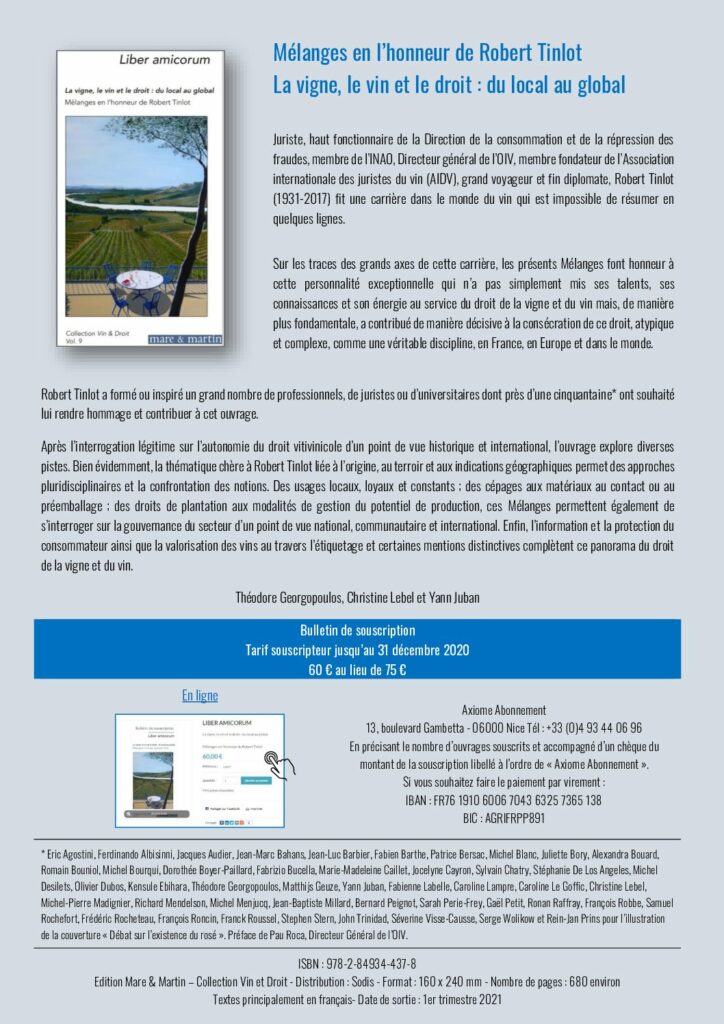

The latest round of reforms was announced in 2006 and led to agreed legal documents in 2008. However, this aim has proven difficult to achieve. A major revision was done in 1999, and it has been stated several times since then that the ambition is to phase out interventions such as emergency distillation, since they are "artificial outlets" for wine. In the mid to late 1990s, much of CAP was overhauled and the legislation was simplified.

This led to reduced overproduction, but a complete balance has so far never been achieved. Since it was realised that the vineyards in some locations would be unlikely to yield wines of the necessary quality, increased financial incentives for giving up vineyards, so-called grubbing-up schemes or vine pull schemes, were introduced in the late 1980s. As a result, the reduced total demand also included a shift in the demand towards higher quality level. Increasing wine exports from the New World, often in a style arrived at by market research rather than long tradition, also meant increased competition and changing tastes among wine consumers. From the 1980s, this has meant a marked reduction in the total demand, in terms of quantity, despite the fact that the wine-importing countries of northern Europe have increased their consumption. At about the same time, domestic consumption of inexpensive wine started to drop within the larger wine producing countries of Europe, making it even harder to return to the previous state of market equilibrium. Also, requirements to distill the surplus wine into industrial alcohol were introduced, a procedure often referred to as " emergency distillation", although it has remained in force for decades. Īfter the realisation that the surplus was a structural one rather than a temporary variation, the wine regulations were changed to be more interventionist in 1978, with a ban on additional vineyard plantations, which means that a system of planting rights was introduced to regulate replantations.

While looking like a very illogical policy in hindsight, this was in keeping with the view that what the EEC was aiming to do was to balance variations in production from year to year. The answer from EEC was to intervene in the market to make some guarantee as to sales, while still keeping the freedom to plant new vineyards, which aggravated rather than solved the problem of overproduction. However, the early post-World War II saw the introduction of many technological innovations within viticulture, which soon led to increased production, while the demand stayed constant.

During this time, there were no regulations as to plantations and few interventions into the market, as this was not needed. In the early days of the CAP, the wine sector of the then- European Economic Community (EEC) was in reasonable equilibrium for a rather short period of time. While a large bulk of the text of the regulations is concerned with winemaking practices and the like, much of the history of the EU wine regulations has been linked to the issue of market imbalances and overproduction of wine. 4 EU regulations and national wine laws.The EU wine regulations, as a part of CAP, do not include regulations on age limits for buying or drinking alcohol, regulations on wine advertising or retailing and other aspects of national social or public health policies of the individual EU member states. In a sense, the wine regulations therefore try to protect both the producer and the consumer. The wine regulations exist to regulate total production in order to combat overproduction of wine and to provide an underpinning to Protected designations of origin (PDOs), among other things. These regulations form a part of the Common Agricultural Policy (CAP) of EU, and regulate such things as the maximum vineyard surface allowed to individual EU member states, allowed winemaking practices and principles for wine classification and labelling. European Union wine regulations are common legislation related to wine existing within the European Union (EU), the member states of which account for almost two-thirds of the world's wine production.


 0 kommentar(er)
0 kommentar(er)
